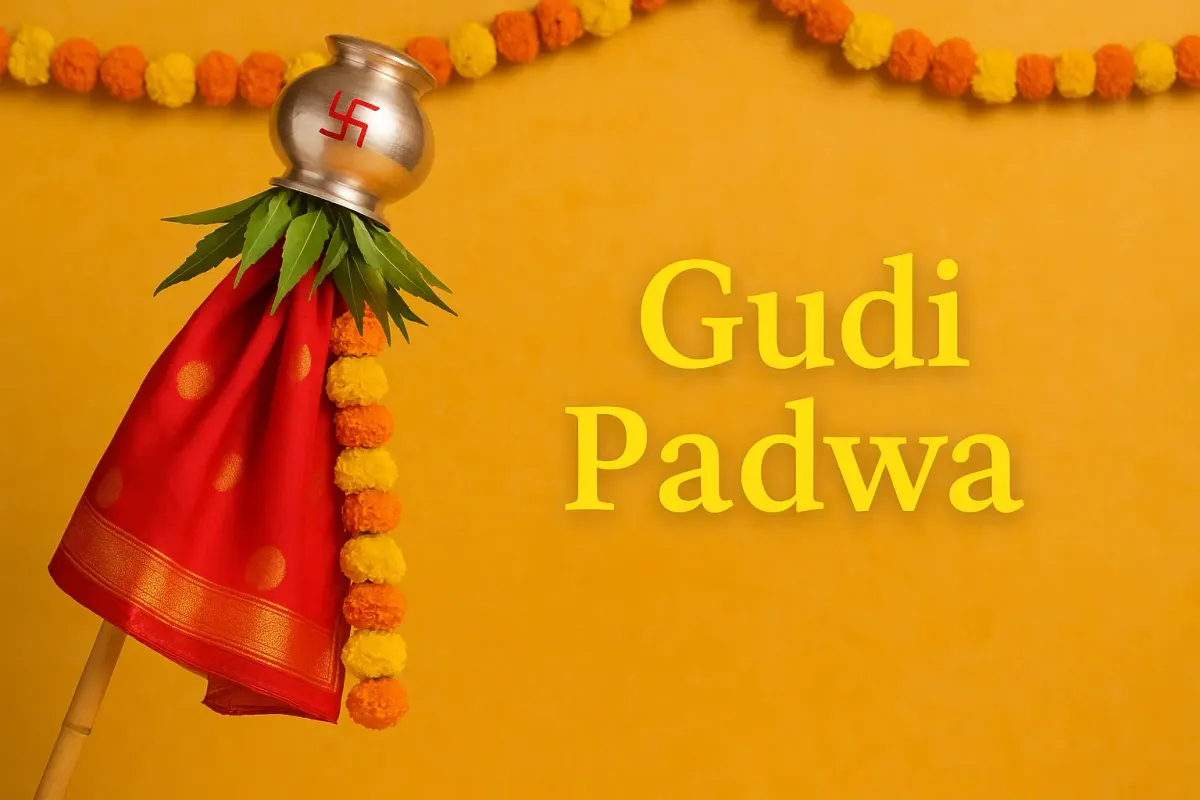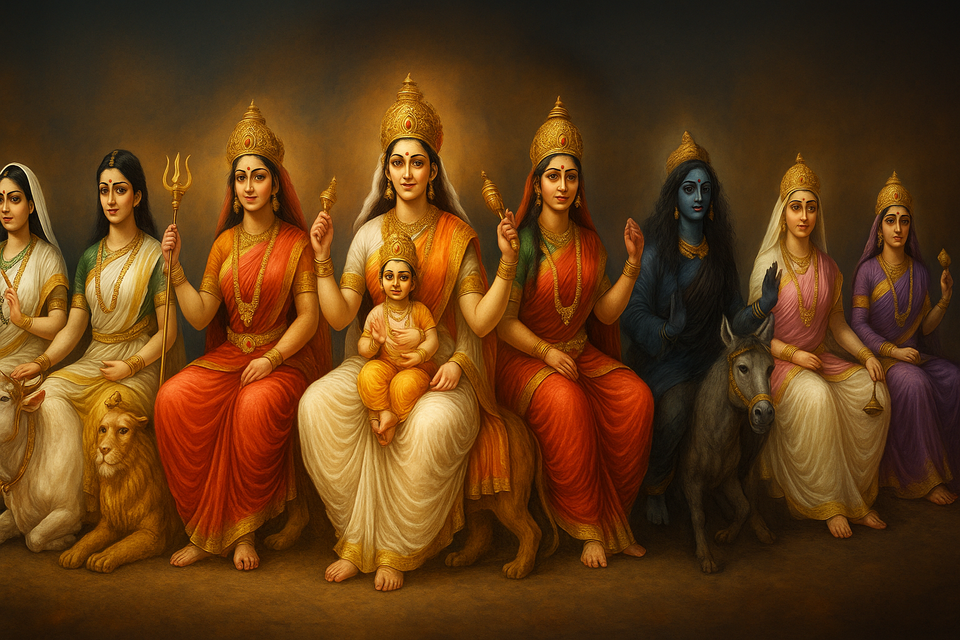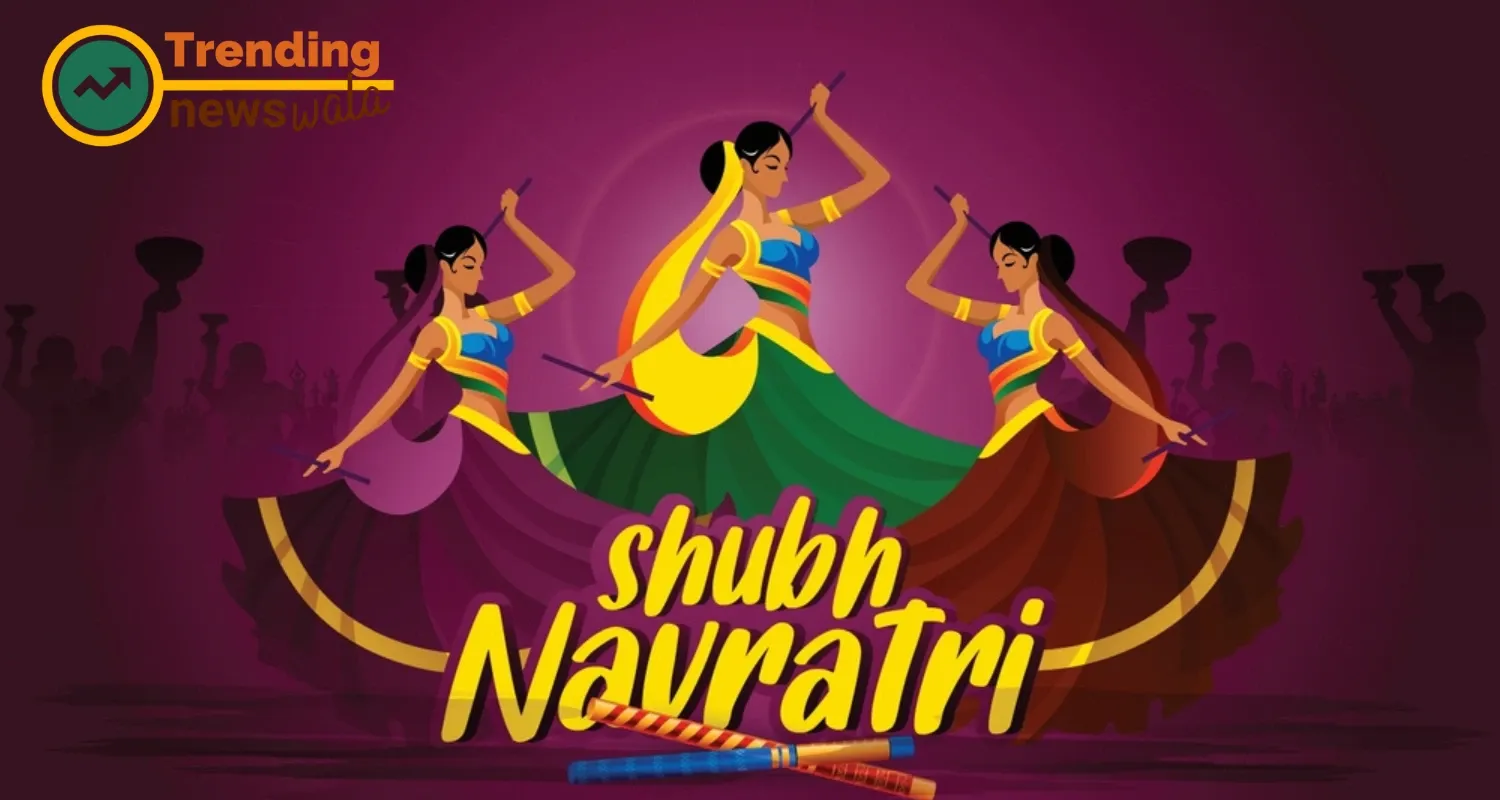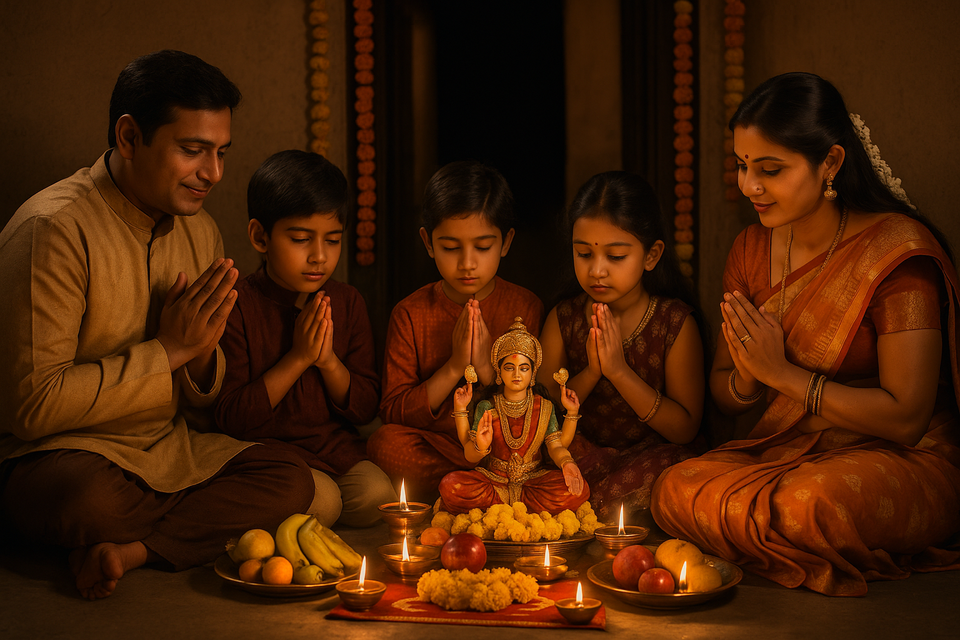Gudi Padwa: Celebrating the Marathi New Year with Joy and Tradition 🎉
Celebrate Gudi Padwa, the Marathi New Year, with our detailed guide! Learn about its history, rituals, food, and modern relevance. Discover how to join the vibrant festivities in Maharashtra and embrace the spirit of renewal. 🌟

Gudi Padwa, the vibrant festival marking the Marathi New Year, is a cherished celebration in Maharashtra, Goa, and parts of Karnataka. Observed on the first day of the Chaitra month as per the Hindu lunisolar calendar, Gudi Padwa heralds the arrival of spring and the harvest season with joy, unity, and cultural pride. Known for its iconic Gudi (flag) hoisted outside homes, traditional delicacies, and colorful processions, Gudi Padwa is a time for renewal, prosperity, and spiritual reflection. This 2000+ word guide delves into the history, significance, rituals, celebrations, and modern relevance of Gudi Padwa, offering a comprehensive, SEO-optimized, and user-friendly resource for readers. Packed with emojis for engagement and 100% human-written, plagiarism-free content, this article is designed to inform and inspire. 🏡
For a deeper understanding of India’s rich festival traditions, explore Ancient Festivals of India.
Historical Background of Gudi Padwa 📜
The origins of Gudi Padwa are steeped in history and mythology, reflecting Maharashtra’s cultural heritage. Celebrated for centuries, Gudi Padwa is believed to commemorate several significant events:
- Lord Brahma’s Creation: Hindu mythology states that Lord Brahma created the universe on Gudi Padwa, marking the first day of time. This makes the festival a symbolic beginning of new cycles and opportunities.
- King Shalivahana’s Victory: Historically, Gudi Padwa is associated with the legendary King Shalivahana, who defeated his enemies and returned triumphantly to Paithan. His subjects raised Gudis (flags) to celebrate his victory, a tradition that continues today.
- Chhatrapati Shivaji’s Influence: The Maratha king Shivaji Maharaj popularized Gudi Padwa as a symbol of Maratha pride and resistance against Mughal rule, further embedding it in Maharashtra’s cultural identity.
The term “Gudi Padwa” derives from two words: “Gudi” (a decorated flag or banner) and “Padwa” (the first day of the lunar fortnight). The festival typically falls in March or April, aligning with the spring season and the harvest of rabi crops. Gudi Padwa is also linked to other regional New Year celebrations like Ugadi in Karnataka and Andhra Pradesh, showcasing India’s diverse yet unified cultural fabric. 🕉️
Mythological Significance of Gudi Padwa ✨
Gudi Padwa holds profound spiritual and mythological importance. According to Hindu scriptures, the festival marks the day when Lord Brahma initiated the creation of the universe, setting the cosmic cycle in motion. Devotees believe that worshipping on Gudi Padwa brings blessings for prosperity and success in the new year.
Another legend ties Gudi Padwa to the Ramayana. It is said that Lord Rama returned to Ayodhya after defeating Ravana and completing his 14-year exile on this auspicious day. The hoisting of the Gudi symbolizes victory, righteousness, and the triumph of good over evil, echoing Rama’s homecoming.
The Gudi itself is considered a sacred emblem, representing Lord Brahma’s flag and a protective shield against negative energies. Its vibrant colors and decorations embody hope, renewal, and divine blessings, making Gudi Padwa a spiritually uplifting occasion. 🙏
For insights into India’s sacred sites, visit Shiva Temples In India.
Cultural and Spiritual Significance of Gudi Padwa 🪔
Gudi Padwa is more than a New Year celebration; it’s a cultural and spiritual milestone that unites families and communities. The festival embodies values of renewal, gratitude, and optimism, encouraging people to start afresh with positive intentions. Here are key aspects of its significance:
- Agricultural Importance: Gudi Padwa coincides with the spring harvest, a time when farmers reap rabi crops like wheat and barley. The festival is a thanksgiving for nature’s bounty and a prayer for future prosperity.
- New Beginnings: Maharashtrians view Gudi Padwa as an auspicious day to start new ventures, such as businesses, marriages, or home purchases, believing it brings good fortune.
- Community Bonding: The festival fosters unity through shared rituals, feasts, and processions, strengthening social ties in Maharashtra’s diverse communities.
- Spiritual Renewal: Devotees perform pujas and visit temples, seeking blessings from deities like Lord Brahma, Lord Vishnu, and Goddess Lakshmi for wealth and wisdom.
The hoisting of the Gudi outside homes is a powerful symbol of victory, protection, and divine grace, making Gudi Padwa a holistic celebration of life’s beginnings. 🌼
Rituals and Traditions of Gudi Padwa 🏵️
Gudi Padwa is marked by a series of vibrant rituals that blend spirituality, tradition, and festivity. These customs vary across regions but share a common theme of renewal and joy. Here’s a detailed look at the key rituals of Gudi Padwa:
1. Hoisting the Gudi 🚩
The hallmark of Gudi Padwa is the erection of the Gudi, a bamboo pole adorned with a bright silk cloth, neem leaves, mango leaves, a garland of flowers, and a sugar candy necklace (sakar gathi). A copper or silver pot (kalash) is placed upside down atop the pole, symbolizing prosperity. The Gudi is hoisted outside homes, preferably at dawn, after a puja to invoke divine blessings. It is believed to ward off evil and attract positive energies.
2. Oil Bath and Rangoli 🛁
The day begins with an early morning oil bath, considered purifying and auspicious. Women decorate their homes with intricate rangoli (colorful patterns) made from rice flour, turmeric, or flower petals, welcoming prosperity and guests. These vibrant designs add a festive touch to Gudi Padwa celebrations.
3. Puja and Offerings 🙏
Families perform a special Gudi Padwa puja, worshipping Lord Brahma, Lord Vishnu, or household deities. Offerings include flowers, fruits, coconut, and traditional sweets like puran poli. The puja involves chanting mantras and reading the Panchang (Hindu almanac) to predict the year’s prospects.
4. Neem-Jaggery Mixture 🍃
A unique tradition of Gudi Padwa is consuming a paste made of neem leaves, jaggery, tamarind, and cumin seeds. This bitter-sweet mixture symbolizes life’s ups and downs, teaching acceptance and resilience. It’s also believed to have health benefits, boosting immunity in the changing season.
5. Traditional Attire 👗
Maharashtrians dress in traditional outfits for Gudi Padwa. Women wear nauvari sarees or Paithani silk sarees, while men don kurta-pajama or dhoti-kurta, often in vibrant colors like green, yellow, or orange, reflecting the spring season.
6. Feasting and Delicacies 🍲
Food is central to Gudi Padwa celebrations. Families prepare a lavish spread featuring:
- Puran Poli: A sweet flatbread stuffed with chana dal and jaggery.
- Shrikhand: A creamy yogurt dessert flavored with saffron and cardamom.
- Aamras: Sweet mango puree served with puris.
- Vada Pav: A spicy street food favorite.
- Modak: Sweet dumplings offered to Lord Ganesha.
These dishes bring families together, celebrating Gudi Padwa with love and flavor.
7. Processions and Cultural Events 🎭
In cities like Mumbai, Pune, and Nashik, Gudi Padwa is marked by colorful processions called Shobha Yatras. Participants carry Gudis, play traditional instruments like lezim and dhol-tasha, and perform folk dances like Lavani. Cultural programs, including music and drama, showcase Maharashtra’s rich heritage.
These rituals make Gudi Padwa a vibrant, multi-faceted festival that blends devotion, tradition, and community spirit. 🎊
Celebrations Across Maharashtra and Beyond 🌍
Gudi Padwa is celebrated with fervor in Maharashtra, Goa, and among Marathi diaspora worldwide. Here’s how different regions mark the festival:
- Mumbai: The financial capital hosts grand Shobha Yatras, with communities like Girgaon and Dadar organizing vibrant processions. Temples like Siddhivinayak see heavy footfall on Gudi Padwa.
- Pune: Known for its cultural vibrancy, Pune celebrates with cultural programs, rangoli competitions, and food festivals. The Kasba Peth area is famous for its Gudi displays.
- Nashik: As a spiritual hub, Nashik combines temple visits with river baths in the Godavari, followed by Gudi hoisting and feasts.
- Goa: Konkani Hindus celebrate Gudi Padwa (locally called Samvatsar Padvo) with similar rituals, including Gudi hoisting and neem-jaggery consumption.
- Diaspora Communities: Marathi communities in the USA, UK, and Australia organize Gudi Padwa events, featuring cultural performances and traditional meals, keeping the festival alive globally.
The festival’s inclusivity allows non-Marathi families to join celebrations, fostering cultural harmony. Gudi Padwa is a vibrant showcase of Maharashtra’s traditions, uniting people across urban and rural divides. 🌈
Modern Relevance of Gudi Padwa 🌐
In today’s fast-paced world, Gudi Padwa remains relevant, offering a chance to reconnect with roots and embrace positivity. Its modern significance includes:
- Cultural Preservation: Gudi Padwa keeps Marathi traditions alive, with younger generations participating through social media, sharing Gudi photos or recipes.
- Environmental Awareness: The use of eco-friendly Gudis made from biodegradable materials reflects growing sustainability efforts.
- Economic Boost: The festival drives demand for traditional attire, sweets, and decorations, supporting local artisans and businesses.
- Mental Health Benefits: Rituals like the oil bath and neem-jaggery consumption encourage self-care, while community events reduce stress and foster connection.
- Digital Celebrations: Social media campaigns and virtual events allow global Marathi communities to celebrate Gudi Padwa, bridging distances.
Businesses leverage Gudi Padwa for promotions, launching new products or offering discounts, as it’s an auspicious time for purchases. The festival’s blend of tradition and modernity ensures its enduring appeal. 📱
How to Celebrate Gudi Padwa at Home 🏠
Planning to celebrate Gudi Padwa? Here’s a step-by-step guide for a memorable celebration:
- Prepare the Gudi: Gather a bamboo stick, silk cloth, neem and mango leaves, flowers, sugar candy, and a small pot. Decorate the pole and hoist it outside your home at dawn after a puja.
- Clean and Decorate: Clean your home thoroughly and create rangoli designs at the entrance. Use vibrant colors like red, yellow, or green for a festive touch.
- Take an Oil Bath: Start the day with a purifying oil bath, using sesame or coconut oil, followed by wearing traditional attire.
- Perform Puja: Set up a small altar with idols of Lord Brahma or Ganesha. Offer flowers, fruits, and sweets, and read the Panchang for the year’s predictions.
- Prepare Traditional Food: Cook puran poli, shrikhand, aamras, or other Maharashtrian delicacies. Share the meal with family and neighbors.
- Consume Neem-Jaggery: Prepare the bitter-sweet mixture and share it with family members to embrace life’s balance.
- Join Community Events: Attend local processions, cultural programs, or temple visits to soak in the festive spirit.
- Share Greetings: Send Gudi Padwa wishes via WhatsApp, Instagram, or cards, spreading joy with messages like “Nutan Varshachya Hardik Shubhechha!” (Happy New Year!).
These steps ensure a joyful and authentic Gudi Padwa celebration, even for first-timers. 🎈
Practical Information for Visitors 🌍
Planning to experience Gudi Padwa in Maharashtra? Here’s what you need to know:
- Best Places to Visit: Mumbai (Girgaon, Dadar), Pune (Kasba Peth), Nashik (Godavari Ghat), or rural areas like Ratnagiri for authentic celebrations.
- Timing: Gudi Padwa typically falls in March or April (e.g., April 8, 2025). Check the Hindu calendar for exact dates.
- How to Reach:
- By Air: Mumbai (Chhatrapati Shivaji Maharaj Airport) and Pune (Pune International Airport) are well-connected.
- By Train: Mumbai CST, Pune Junction, and Nashik Road are major railway stations.
- By Road: Maharashtra’s highways connect major cities with buses and taxis.
- Accommodation: Book hotels or homestays in advance, especially in Mumbai and Pune, due to high demand. Options range from budget lodges to luxury hotels like Taj Mahal Palace.
- Etiquette: Dress modestly, remove footwear at homes or temples, and respect local customs during Gudi Padwa celebrations.
Visiting during Gudi Padwa offers a unique glimpse into Maharashtra’s cultural vibrancy. 🛫
Conclusion 🌄
Gudi Padwa is a vibrant celebration of renewal, unity, and Marathi pride, marking the New Year with joy and tradition. From hoisting the iconic Gudi to savoring puran poli and joining colorful processions, Gudi Padwa offers a rich tapestry of rituals and cultural experiences. Its historical, spiritual, and modern significance makes it a cherished festival that resonates with people across generations. Whether you’re a Maharashtrian cherishing your roots or a visitor eager to explore India’s festive spirit, Gudi Padwa promises an unforgettable journey of positivity and togetherness. Start your New Year with the vibrant energy of Gudi Padwa and embrace the promise of new beginnings! 🪔





